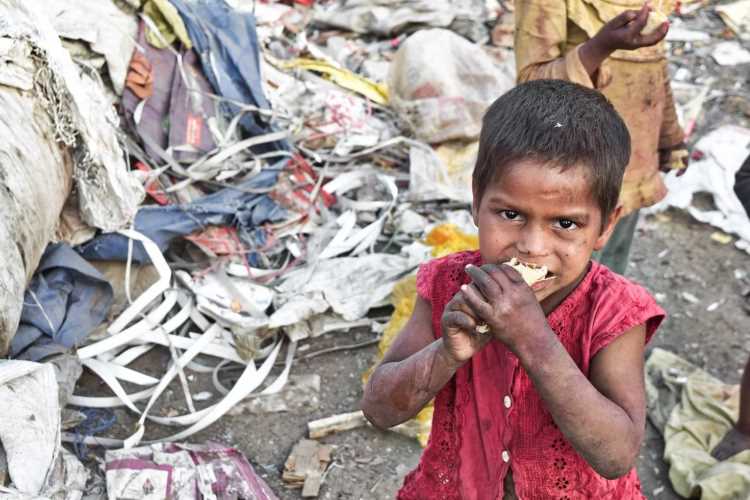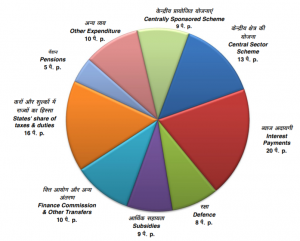
Budget 2022 and subsidies: The economy continues to reel under the impact of the Covid-19 pandemic. The last two years have been especially tough for the government as it had to leave the path of fiscal prudence in the face of an unprecedented economic crisis triggered by the pandemic. The subsidy bill for the current fiscal year ending March 31 could be around Rs 5.35-5.45 lakh crore.
Newspaper reports say the government plans to peg food and fertiliser subsidies at Rs 2.6 lakh crore and Rs 90,000 crore respectively in the upcoming Budget 2022. The question is if it can afford to cut subsidies in a situation where people are highly dependent on agriculture jobs and the public distribution system. Cutting food and fertiliser subsidies may affect growth and aggravate poverty.
India is an agriculture dominated economy with more than half of the population depending on farming directly or indirectly for their livelihood. Farm subsidies form an important part of the government’s budget. While in developed countries, the agricultural or farm subsidies compose nearly 40% of the total budgetary outlay, it is much lower in India which offers direct and indirect subsidies.
READ I Budget 2022 must keep focus on economic revival amid Omicron surge
Subsidies necessary despite flaws
These subsidies have always been a target of criticism. Firstly, the indirect subsidy has been blamed for benefiting big farmers more than small and medium farmers as the bulk of the subsidised fertilisers is picked up by rich farmers. The small and marginal farmers own just 37% of the farm land.
Budget 2021: How the money was spent

Secondly, indirect subsidy has also been a disincentive to improvements in production processes since manufacturers have no compulsion to raise efficiency. Cash subsidies are considered more beneficial to farmers as they will free up the distribution system and allow people who receive the subsidy to choose where they buy their goods from.
The complexity lies in the identification of beneficiaries as opposed to the transfer of funds. Looking at the success of direct cash transfer in various countries across the globe, the Indian government started a pan-India scheme to disburse all forms of subsidies directly, through the Direct Benefit Transfer (DBT) in 2015–16.
The food subsidy also provides cover to the marginalised and poor sections of society apart from farmers. To sum up, food subsidies not only ensure remunerative prices to farmers, encouraging them to increase production and improve access to food for economically vulnerable people, but also stabilises food grain prices and availability in the country.
The PDS assures beneficiaries that they will receive food grains, and insulates them against price volatility. The government also provides food grains via fair price shops in villages which are easy to access. The system is not without its demerits as huge leakages have been observed in it, both during transportation and distribution. These include pilferage and errors of inclusion and exclusion from the beneficiary list. At times, beneficiaries have also reported receiving poor quality food grains.
READ I Five issues that will shape US-India ties in 2022
Budget 2022 may see financial jugglery
The government also spends a large amount on fertiliser subsidy, compensating manufacturers for selling their product below cost. The subsidy bill for the current year is likely to be in the vicinity of 1.3 lakh crore.
Fertiliser is a critical and expensive input in improving agricultural output. Since the Green Revolution in the mid-1960s, there has been a sharp increase in the use of fertilisers in the country. Today, fertiliser subsidies stand at around 10% of the total agricultural GDP as the government looks to incentivise its usage.
Earlier, the government had to substantially increase the fertiliser subsidy amid farmer protests. In the budget unveiled in February 2021, this was pegged at nearly Rs 80,000 crore. Additional funds were provided twice due to increase in prices of fertiliser and supply side disruptions. Newspaper reports have quoted finance ministry officials saying that the allocation towards the fertiliser subsidy for FY23 could be lower than the revised estimates.
The Union Budget 2022 will be presented by finance minister Nirmala Sitharaman on February 1. Despite the assembly elections in Goa, Manipur, Punjab, Uttar Pradesh and Uttarakhand, the government is expected to maintain the momentum of agriculture reforms. The budgetary allocation of the agriculture ministry has shot up substantially after the Narendra Modi government came to power in 2014.
Elections to the state assemblies could influence the final subsidy figures of Budget 2022 as the BJP looks to woo farmers after the massive protests from the agrarian community against the three farm laws that forced the government to withdraw them.
Prachi Gupta is an Assistant Editor with Policy Circle. She is a post graduate in English Literature from Lady Shri Ram College For Women, Delhi University. Prachi started her career as a correspondent with financialexpress.com. She specialises in policy impact studies.

